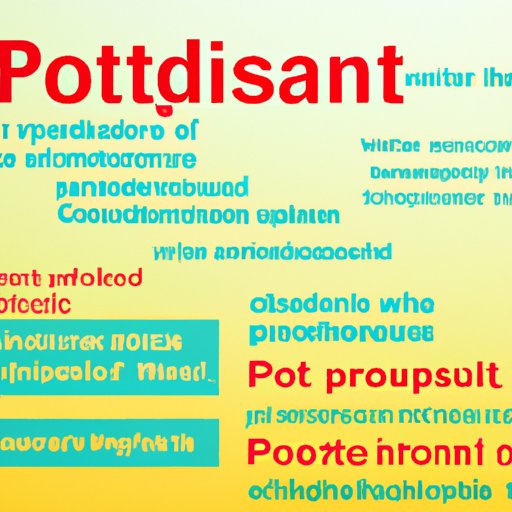Introduction
Postmodernism is a broad term that encompasses a wide range of literary theories, styles, and approaches. Simply put, postmodernism is a movement in literature that rejects traditional forms and conventions in favor of new, innovative techniques. Postmodernism seeks to challenge the status quo and explore alternative ways of telling stories. In this article, we will be exploring what postmodernism is, its characteristics, examples, and influences.

Exploring the Characteristics of Postmodernism in Literature
Postmodernism in literature is characterized by a focus on experimentation and innovation. One key characteristic of postmodernist literature is the use of “metafiction” or self-referential works that comment on the process of writing and storytelling itself. By breaking down the traditional boundaries between reader and author, postmodernists seek to create an interactive experience for the reader. Other key characteristics of postmodernism include the deconstruction of traditional narrative structures, the use of parody, irony, and intertextuality, and the blurring of boundaries between genres.
Examining the Impact of Postmodernism on Modern Literary Movements
Postmodernism has had a significant influence on modern literary movements, particularly post-structuralism. Post-structuralism is a philosophical approach to literature that focuses on the deconstruction of language in order to reveal underlying power structures and meaning. Postmodernism also had an impact on popular culture, as many postmodernist works were adapted into films, television shows, and even video games.

Analyzing Examples of Postmodernism in Literature
One of the most influential postmodernist works is Thomas Pynchon’s 1973 novel “Gravity’s Rainbow.” The novel follows the exploits of an American soldier during World War II and is notable for its experimental narrative structure, use of metafiction, and exploration of themes such as paranoia and surveillance. Another classic example of postmodernism is Kurt Vonnegut’s 1969 novel “Slaughterhouse-Five.” This work is notable for its non-linear structure, exploration of free will, and use of black humor. Margaret Atwood’s 1985 novel “The Handmaid’s Tale” is another example of postmodernist literature. This dystopian novel explores themes of oppression, gender roles, and religious fundamentalism.
The Role of Postmodernism in Contemporary Writing
Postmodernism continues to have a major influence on contemporary writing. Postmodernist writers often reject conventional formulas and push the boundaries of genre and form. Writers are increasingly blurring the boundaries between fiction and non-fiction, poetry and prose, and highbrow and lowbrow literature. As a result, readers are presented with a variety of different perspectives and stories.

An Overview of Postmodernist Writers and Their Works
Salman Rushdie is one of the most famous postmodernist writers. His works, such as “Midnight’s Children” and “The Satanic Verses,” are known for their exploration of themes such as identity, religion, and politics. Don DeLillo is another prominent postmodernist writer. His works, such as “White Noise” and “Underworld,” are known for their exploration of technology, consumerism, and the human condition. Toni Morrison is an important postmodernist writer who is known for her exploration of race, gender, and history in works such as “Beloved” and “Song of Solomon.”
Comparing Postmodernism to Other Literary Movements
Postmodernism can be seen as a reaction to both realism and modernism. Realism is a literary movement that focused on depicting everyday life and social issues in a realistic manner. Modernism is a movement that sought to break down traditional forms and conventions in favor of experimentation and innovation. Postmodernism builds upon these two movements, rejecting the notion of absolute truth in favor of exploring multiple points of view.
Conclusion
In conclusion, postmodernism is an important literary movement that has had a lasting impact on modern literature. Postmodernism is characterized by a focus on experimentation and innovation, with a focus on challenging traditional forms and conventions. Examples of postmodernism can be found in works such as Thomas Pynchon’s “Gravity’s Rainbow,” Kurt Vonnegut’s “Slaughterhouse-Five,” and Margaret Atwood’s “The Handmaid’s Tale.” Postmodernism continues to have an influence on modern writing, with writers increasingly blurring the boundaries between genres and rejecting conventional formulas.
(Note: Is this article not meeting your expectations? Do you have knowledge or insights to share? Unlock new opportunities and expand your reach by joining our authors team. Click Registration to join us and share your expertise with our readers.)
